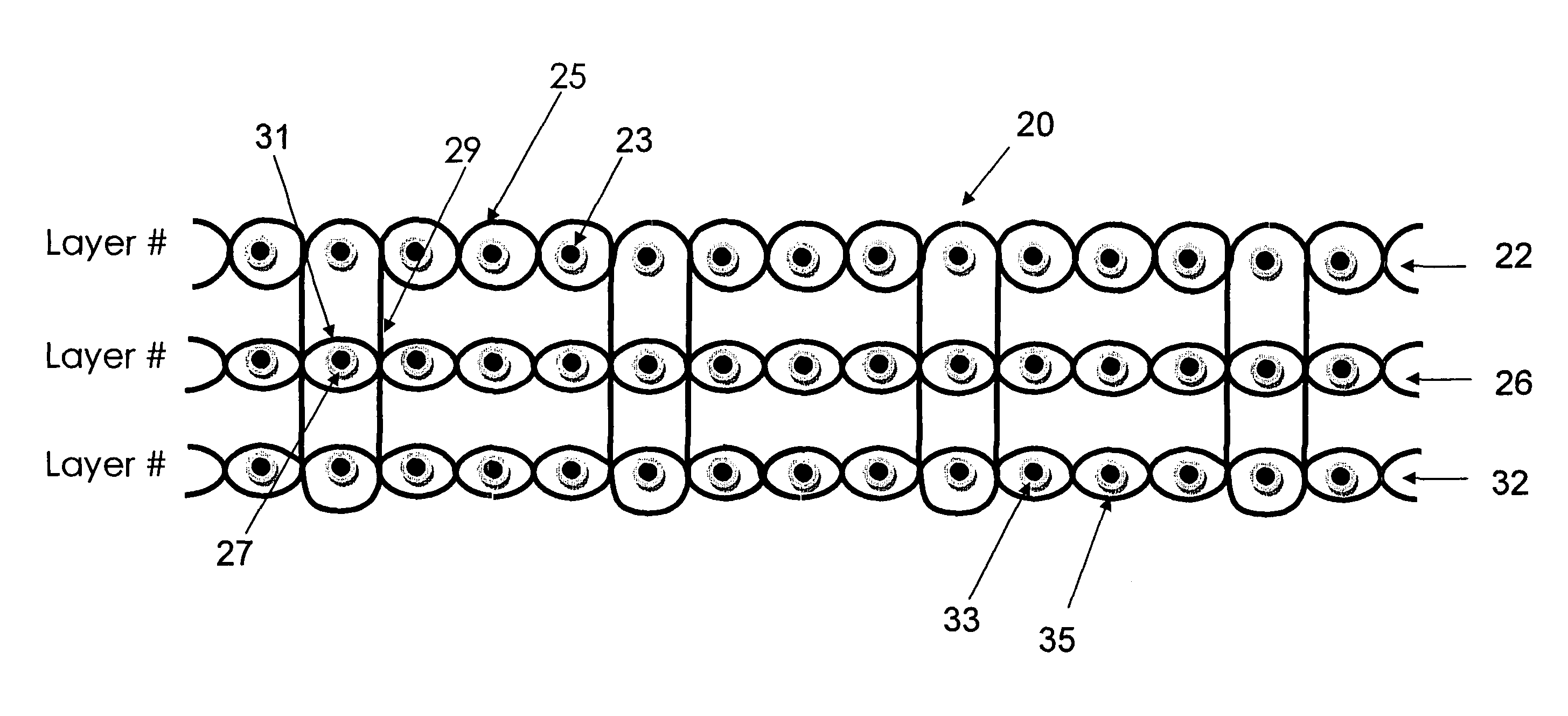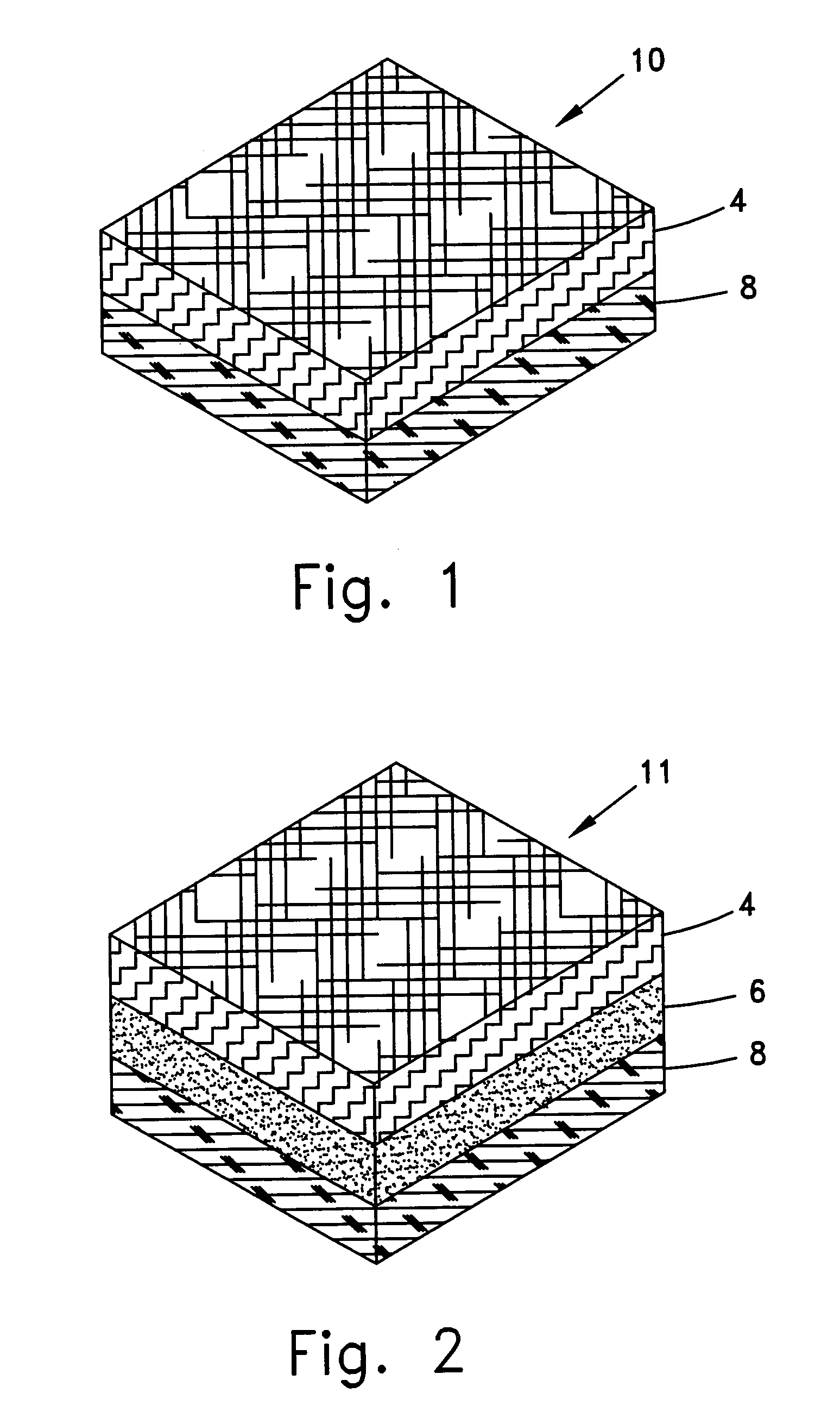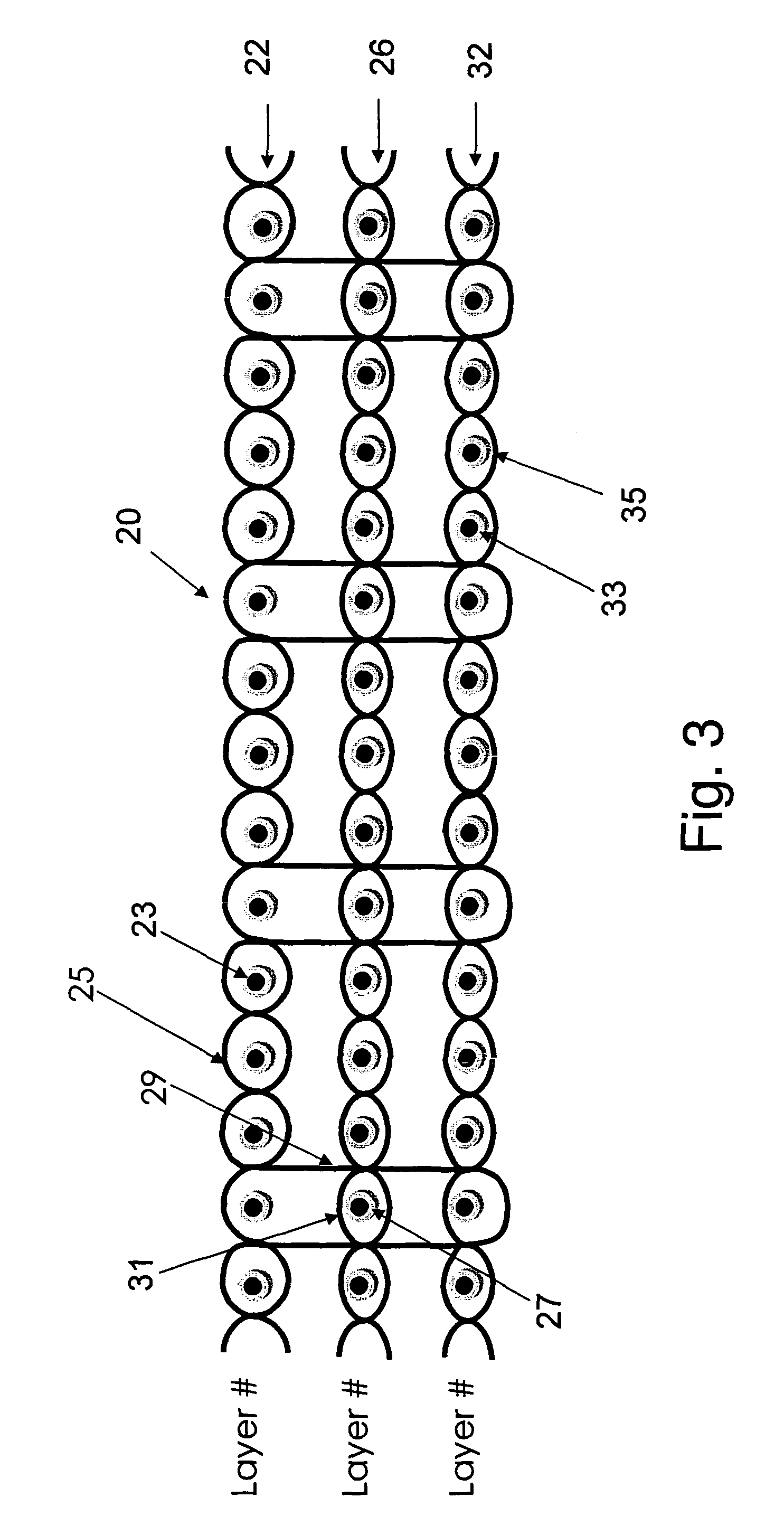Composite fabric product and production process therefor
a technology of composite fabrics and manufacturing processes, applied in the field of composite fabric products, can solve the problems of poor tensile strength and many different severe drawbacks of prior art composite fabrics, and achieve the effect of great flexibility
- Summary
- Abstract
- Description
- Claims
- Application Information
AI Technical Summary
Benefits of technology
Problems solved by technology
Method used
Image
Examples
Embodiment Construction
[0037]The present invention provides a composite fabric product that may have a hardened formed plastic on one side and the look, feel, and texture of a designed fabric on the other side, or also a hardened formed plastic sandwiched between two or more layers of textile material, the look, feel, and texture of a designed fabric being provided on both outer sides. A multi layer integrated fabric is woven or knitted with a selected combination of threads of any form and material, and include at least one layer that contain reinforcement threads and fibers / yarns made from thermoplastic material with a known melting temperature. The fabric is heated to the abovementioned melting temperature. The melted material creates a matrix that solidifies after cooling and form a hardened section that may be on the surface or inside the product. Apart from the thermoplastic material mentioned, all other fibers / yarns used for weaving the fabric should not significantly deteriorate when exposed to th...
PUM
| Property | Measurement | Unit |
|---|---|---|
| melting temperature | aaaaa | aaaaa |
| temperature | aaaaa | aaaaa |
| thermoplastic | aaaaa | aaaaa |
Abstract
Description
Claims
Application Information
 Login to View More
Login to View More - R&D
- Intellectual Property
- Life Sciences
- Materials
- Tech Scout
- Unparalleled Data Quality
- Higher Quality Content
- 60% Fewer Hallucinations
Browse by: Latest US Patents, China's latest patents, Technical Efficacy Thesaurus, Application Domain, Technology Topic, Popular Technical Reports.
© 2025 PatSnap. All rights reserved.Legal|Privacy policy|Modern Slavery Act Transparency Statement|Sitemap|About US| Contact US: help@patsnap.com



